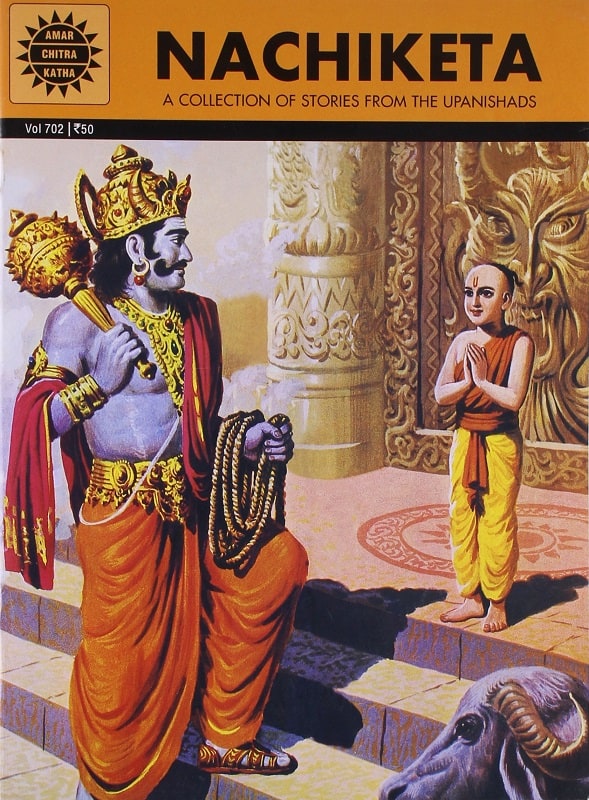STORYTELLING: 4.5/5 ILLUSTRATIONS: 4.5/5 RELEVANCE AND VALUE: 5/5 OVERALL: 4.5/5
If I get ten or twelve boys with the faith of Nachiketa, I can turn the thoughts and pursuits of this country into a new channel.“
– Swami Vivekanand
My musings
As I search for more books to read to my six-year-old daughter, I find myself drawn towards Amar Chitra Kathas. Once you start reading them, a whole new world of Hindu thought and philosophy opens up. Forget about children, even adults will find novel avenues of learning and reasoning.
So, it was while browsing through the Kindle Unlimited catalog, that I found the book Nachiketa scripted by Subba Rao and illustrated by P.B. Kavadi.
Read on to know more about the book and my review of it.
Nachiketa
A name that was both familiar and unfamiliar to me. I remember having read Nachiketa’s story in a book by Sudha Murty. That story, as far as I remember, was a short one, which meant that the minute details were largely glossed over.
Who is Nachiketa?
The child prodigy Nachiketa was the son of Rishi Vajashravas. He is known for his tunnel-focused dedication towards the pursuit of self-realization or Moksha. Nachiketa’s story finds mention in the Katha Upanishad (believed to have been written around 9th century BCE). He is known to have learned the true knowledge about atman and brahman from the great Dharmaraja Lord Yama himself.
A young boy, who saw through the illusion of the world, who sought nothing but the truth, who with his sheer devotion to truth and knowledge impressed the mighty Lord Yama himself.
Other stories that the book contains
In addition to narrating the tale of Nachiketa, the book also includes stories of Satyakama and Prajapati.
Satyakama, a boy of eight years, of unknown birth, arrives at the ashram of the great sage Gautama. He comes seeking the sacred knowledge – brahman; the knowledge of the supreme reality. Because he doesn’t know his father or father’s family, some elder scholars object to his admission, but the great sage Gautama agrees to take Satyakama as a disciple, saying “He who speaks the truth without fear or hesitation is a Brahmana.” And so, begins Satyakama’s journey towards self-realization.
Prajapati, the father of all beings – devas, manavas, and asuras, is approached by his offspring as they all seek contentment and peace. The Prajapati replies with a single syllable ‘Da’ and leaves it upon them to seek its meaning.
Introducing children to Hindu philosophy and thought
A very important concept that the book introduces is about life after death and the journey of the soul, the never-ending cycle of birth and death until the aatma realizes self and mingles with the supreme soul. Through the story of Nachiketa, we are introduced to the concept of the illusion of desires.
In the other stories, we learn the three cardinal virtues in Hindu thought and bodies of work – Damyata – restrain or self-control, Datta – charity, and Dayadhvam – compassion.
The underlying theme in all these three stories is that of the search for knowledge. Whether it is the search for the mysteries of life after death, search for the supreme soul brahman, or the search for peace and contentment – they all stress over inner reflection. Elucidating the importance of self-acquired knowledge by consciously seeking it.
Needless to say, the book has moral, ethical, and socio-cultural lessons for children and adults alike.
Buy your copy of Amar Chitra Katha’s Nachiketa using the link below.
Also, check out Precious Gems from Hindu Mythology.
